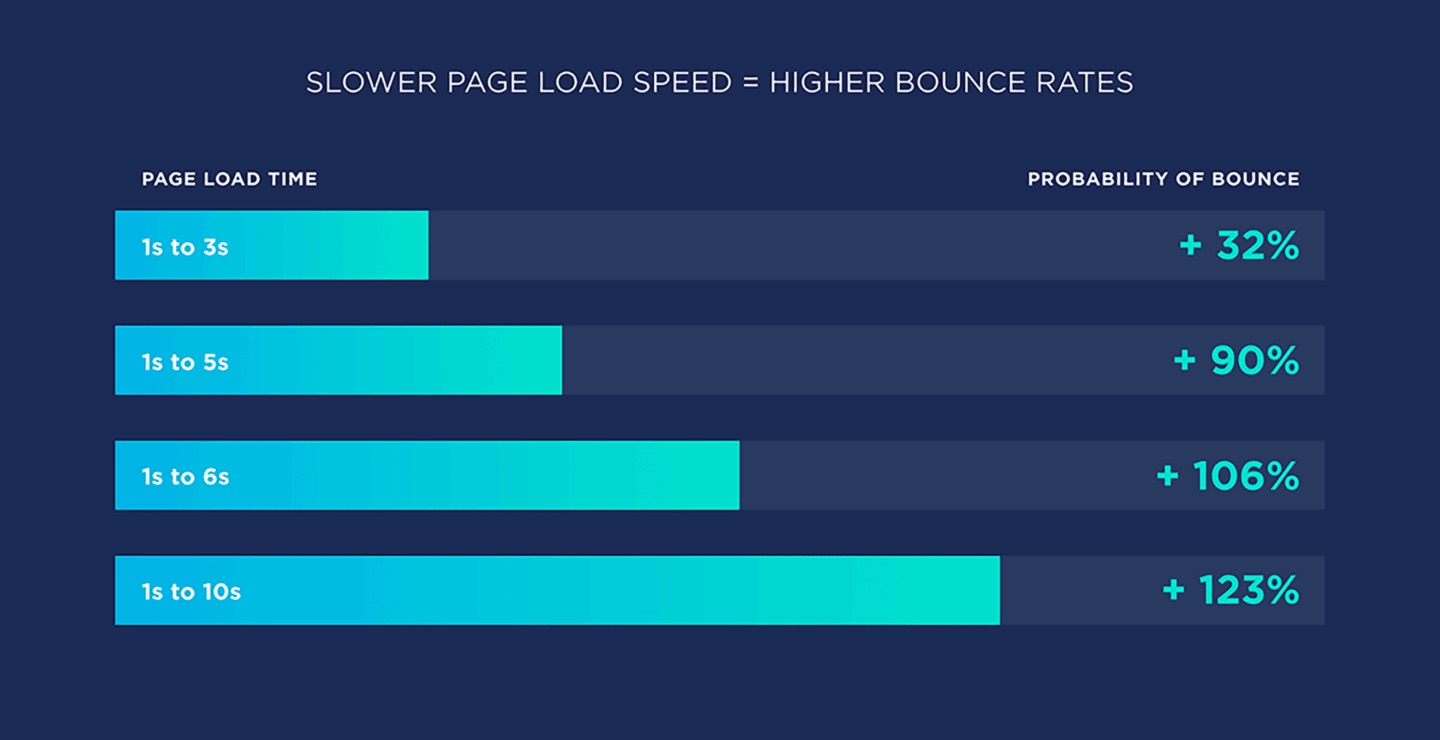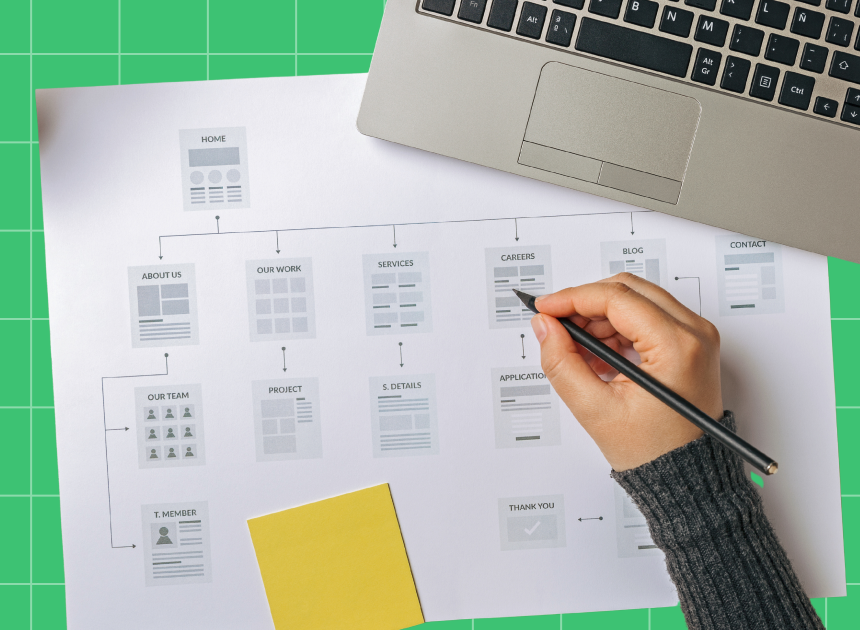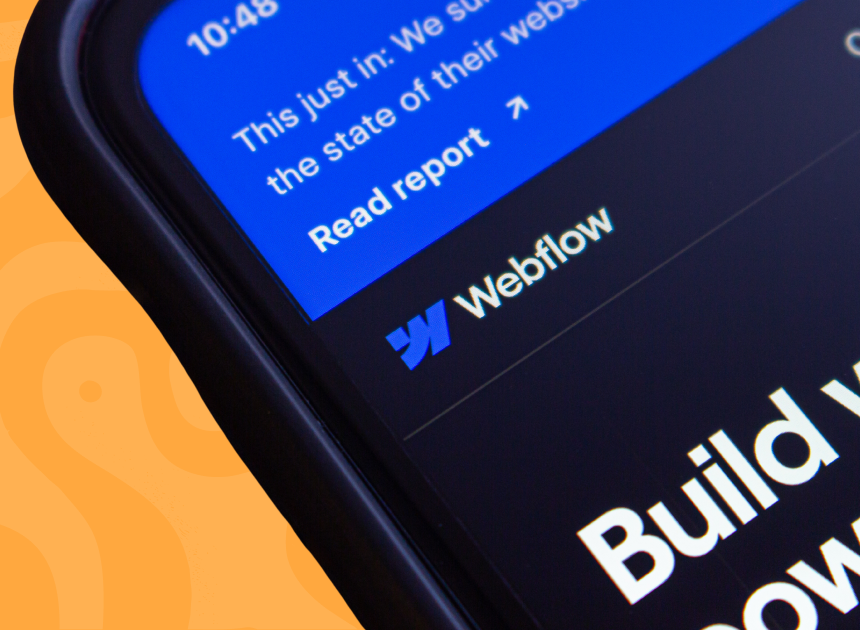The idea of this article is an intuitive one: a faster, smoother site should be more effective at getting new patients.
But what does the data show regarding the effects of page speed on conversion of new patients? What is really happening when a site is fast vs. slow?
We wrote at length in a recent article about what we believe is the most important function of a website: converting potential new patients.
Outside of referrals, patients who have never worked with you don’t trust you yet and have no impression of you. When they enter your site, the first impression is made, and their trust begins to develop (or it doesn’t).
This article will explore page speed, perhaps the most critical quantitative factor of your website of trust, and its effect on getting a new patient to work with your practice. We will define three key terms: page speed, bounce rate, and conversion. Then, we’ll work backwards from our goal of conversion to explore the relationships between each component:
- Understanding bounce rate’s impact on conversion
- Understanding page speed’s impact on bounce rate
- Connecting conversion to page speed
What is Page Speed?
Page speed is how quickly and smoothly your page loads and optimizes for a site visitor’s device.
When a new visitor clicks on your site, the code for the home page of your site is executed. Content, media files, and design elements like colors and fonts must load and orient themselves properly relative to one another for the given screen size of the visitor’s device.
Of course, the amount of content and the size and number of files impact page speed, but how they are coded into the page and all of the rules for orientation have a massive impact.
We like to use a road trip analogy: The design is the destination. The code is the car, rules of the road, the map, and the driver.
Determining Page Speed: There are several tools available for understanding page speed, but our favorite is Google PageSpeed Insights. This tool analyzes how well your website performs on desktop computers and mobile devices. A website is scored on Performance, Accessibility, Best Practices, and SEO for both desktop and mobile. “Performance” is Google’s page speed metric, and in the breakdown of that score, they give some insight as to how the score was generated. We like this tool because it is free and intuitive. Plus, there is no limit in how many sites you can run (so, yes, you can test your site and all your competitors’ right now). We will release an article soon on how to decipher the Performance results from your Google PageSpeed analysis.
What is Bounce Rate?
Bounce rate is the percentage of visitors who visit a site, view only one page, and leave without clicking on anything.
Visitors that bounce do not book or buy anything. A possible exception is the patient who visits your site, gets your phone number without clicking on anything, and books an appointment over the phone, but this is likely rare and would not show up in your website metrics unless tracked via a customized setup.
Determining Bounce Rate: Go to your website’s analytics dashboard (likely available on whatever platform you built your site on) and see if bounce rate is already measured and available. If not, see how many total sessions occurred on your site for a given time period. Then see how many single-page sessions occurred in that same time period. Divide the single-page sessions by the total sessions. Multiply that by 100 to yield your bounce rate as a percentage.
What is Conversion?
A conversion occurs when a visitor takes the desired action of your site.
For most dental practices, the desired action is either scheduling an appointment for a specific procedure or booking a consultation. This could also be a phone call to the office (not recommended, as this makes conversion reliant on your office being open and staff being available).
Determining Conversions: Go to your website’s analytics dashboard and see if conversions are already measured and available. If not, find the metric that indicates conversion, such as bookings or form submissions. You can divide this number by the number of total sessions and multiple by 100 to determine conversion rate as a percentage.
Conversion should be the primary goal for a practice’s site. With that in mind, let’s work backwards from our goal.
Understanding Bounce Rate’s Impact on Conversion
When potential new patients visit your website, they rapidly sort themselves into two groups: Bounced Visitors and Active Visitors.
Bounced Visitors visit only one page, click nothing, take no action, and tend to leave your site quickly.
Active Visitors visit multiple pages, browsing and consuming a wider range of information. Nearly all visitors who are considering conversion are in this group, and all of your conversions come from this group.
The quality of your written and visual content, the ease of navigation to relevant information, the availability of your call to action, and the smoothness of the conversion process will all contribute to the rate at which Active Visitors convert.
Let’s say 100 people visit your site in a week, and six convert. Your site has a conversion rate of 6%. Let’s factor in bounce rate using a conservative average of 60% (via Now Media Group). That means you have 40 Active Visitors per month, six of whom convert. Therefore, your conversion rate among Active Visitors is 15%.
What if we could improve our bounce rate from 60% to 40%? That means from the 100 people that visit your site, 60 would be Active Visitors. If our conversion rate among Active Visitors remains steady at 15%, then we would see nine conversions.
This oversimplified example demonstrates the profound impact bounce rate has on conversion rate. Simply improving your bounce rate leads to more conversions because it moves people from a group that doesn’t interact and leaves quickly to a group that reads, explores, and more deeply considers conversion.
So how do we improve our bounce rate?
Understanding Page Speed’s Impact on Bounce Rate
There are many things you can do to keep visitors on your site. A beautiful visual can pique someone’s interest in a new procedure. A well organized service layout can help someone find easily what they need. A timed offer for a free assessment can create urgency.
Page speed is the Achilles’ heel for bounce rate, though. A plethora of studies have shown the correlation between page speed and bounce rate, and it is safe to say: the slower the page speed, the higher the bounce rate.

We’ve seen no data that show a tighter correlation with bounce rate than that of page speed.
Perhaps the most pressing study was a Google analysis of 11 million sites (graphic via backlinko.com). This analysis showed that the probability of bounce nearly doubled between page speeds of one second and five seconds. Nearly 60% of that increase occurred between three and five seconds.
For reference, page speeds of one second are good, three seconds are okay, and five seconds are largely avoidable with effective web development.
One second is a very realistic and achievable aim for most dental websites, but even more complex sites should be able to get under three seconds.
If your practice’s site operates slowly, getting page speed towards one second would likely lead to a meaningful improvement in bounce rate.
Connecting Conversion to Page Speed: The Bottom Line
Several studies have connected conversion and page speed directly, but the results vary.
Bidnamic’s research shows each second you improve page speed yields a 17% increase in conversion rate. Portent’s study on e-commerce sites shows conversion rate is 2.5x higher for sites with one-second page speed vs. five-second page speed. A Deloitte & Google study showed a 0.1-second improvement resulting in a whopping 8.4% improvement in conversion rate on mobile.
While the specifics vary, the insight is consistently and resoundingly true: better page speed means more conversions.
Here is the bottom line. Of the innumerable variables that determine whether or not a potential new patient converts, page speed is 1) extremely highly correlated, 2) relevant to every site, and 3) largely in your control.
Improving Page Speed
Design and code are the two main factors impacting page speed. Recall our road trip analogy from the page speed definition: Design is your destination; code is your car, rules of the road, the map, and the driver.
Start with the latter. Have a professional review how your site is built. Have him or her remove all unused code and plug-ins and double check compression and rendering processes for all media files and interactive elements. Make sure your car is in good shape, your route is effective, and that you’re set up to effectively get to your destination.
Furthermore, consider building your site on a platform that emphasizes sustained performance (like Webflow) vs. convenience (Wordpress, Wix, Squarespace). Consider this buying a better car and hiring a professional driver.
If all possible code improvements have been made, and you’re still unsatisfied with your page speed, consider removing some of your larger media files and interactive elements. Think of this as picking a more accessible destination.
We will release an article diving more deeply into the drivers of Page Speed in the coming weeks.
Final Thoughts
In summary, improving page speed causes less visitors to bounce and more visitors to become Active Visitors. More Active Visitors means the group that converts gets larger, and more new patients convert.
Optimizing page speed to improve bounce rate and conversion is just one piece of a larger effort to get the most out of your site.
Strong search engine optimization (SEO) will help as many people as possible enter your site. Beautiful, intuitive design and a seamless conversion process will improve your conversion rate of Active Visitors.
However, no improvement is more universally high-leverage than improving a poor page speed.
Want to see how you could improve your page speed, bounce rate, and conversion? Reach out for a free site audit!




